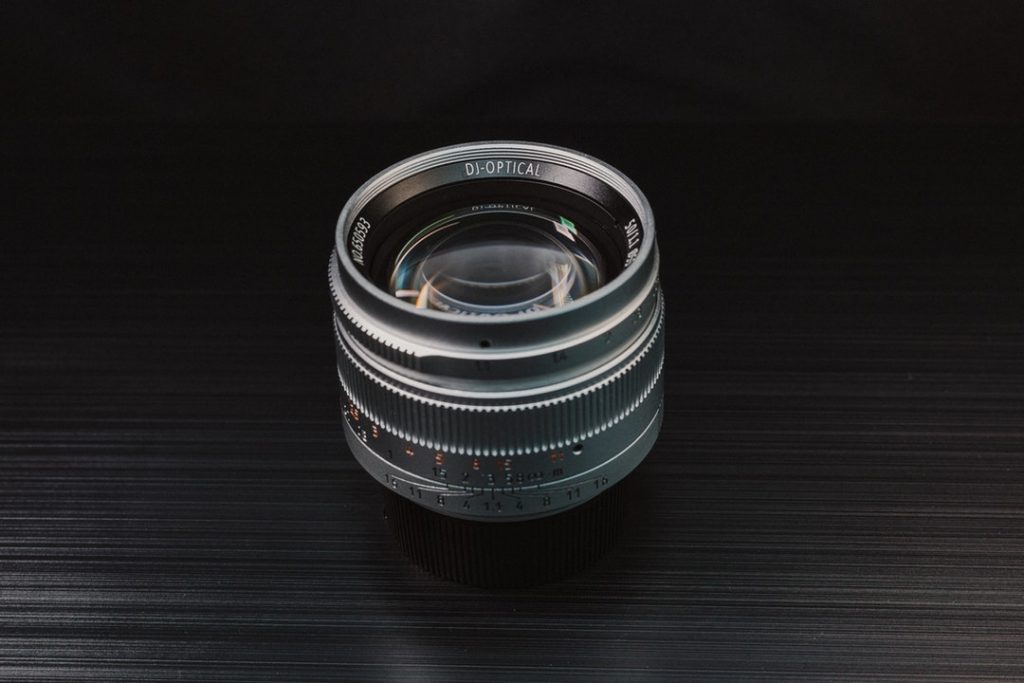The Loop is PHP code used by WordPress to display posts. Using The Loop, WordPress processes each post to be displayed on the current page, and formats it according to how it matches specified criteria within The Loop tags. Any HTML or PHP code in the Loop will be processed on each post.
When WordPress documentation says "This tag must be within The Loop", such as for specific Template Tags or plugins, the tag will be repeated for each post. For example, The Loop displays the following information by default for each post:
You can display other information about each post using the appropriate Template Tags or (for advanced users) by accessing the $post variable, which is set with the current post's information while The Loop is running.
For a beginner's look at The Loop, see The Loop in Action .
Using the Loop
The Loop should be placed in index.php and in any other Templates used to display post information.
Be sure to include the call for the header template at the top of your Theme 's templates. If you are using The Loop inside your own design (and your own design is not a template), set WP_USE_THEMES to false:
<?php define( 'WP_USE_THEMES', false ); get_header(); ?>
The loop starts here:
<?php if ( have_posts() ) : while ( have_posts() ) : the_post(); ?>
and ends here:
<?php endwhile; else : ?>
<p><?php _e( 'Sorry, no posts matched your criteria.' ); ?></p>
<?php endif; ?>
This is using PHP's alternative syntax for control structures, and could also be expressed as:
<?php
if ( have_posts() ) {
while ( have_posts() ) {
the_post();
//
// Post Content here
//
} // end while
} // end if
?>
Loop Examples
This example displays each post with its Title (which is used as a link to the Post's Permalink ), Categories, and Content. It also allows posts in a category with Category ID '3' to be styled differently. To accomplish this, the in_category() Template Tag is used. Read the comments carefully to see what each part of the code is doing.
<!-- Start the Loop. -->
<?php if ( have_posts() ) : while ( have_posts() ) : the_post(); ?>
<!-- Test if the current post is in category 3. -->
<!-- If it is, the div box is given the CSS class "post-cat-three". -->
<!-- Otherwise, the div box is given the CSS class "post". -->
<?php if ( in_category( '3' ) ) : ?>
<div >
<?php else : ?>
<div >
<?php endif; ?>
<!-- Display the Title as a link to the Post's permalink. -->
<h2><a href="<?php the_permalink(); ?>" rel="bookmark" title="Permanent Link to <?php the_title_attribute(); ?>"><?php the_title(); ?></a></h2>
<!-- Display the date (November 16th, 2009 format) and a link to other posts by this posts author. -->
<small><?php the_time('F jS, Y'); ?> by <?php the_author_posts_link(); ?></small>
<!-- Display the Post's content in a div box. -->
<div >
<?php the_content(); ?>
</div>
<!-- Display a comma separated list of the Post's Categories. -->
<p ><?php _e( 'Posted in' ); ?> <?php the_category( ', ' ); ?></p>
</div> <!-- closes the first div box -->
<!-- Stop The Loop (but note the "else:" - see next line). -->
<?php endwhile; else : ?>
<!-- The very first "if" tested to see if there were any Posts to -->
<!-- display. This "else" part tells what do if there weren't any. -->
<p><?php _e( 'Sorry, no posts matched your criteria.' ); ?></p>
<!-- REALLY stop The Loop. -->
<?php endif; ?>
Note: All HTML code must be outside the <?php ?> tags. And, PHP code (even things as simple as curly braces: } ) must be inside the <?php ?> tags. You can start and stop blocks of PHP code to intersperse HTML code within if and else statements, as shown in the above example.
This example demonstrates how to hide a specific Category or Categories from being displayed. In this case, posts from Categories 3 and 8 are excluded. The example is different than the example above in that it makes a change to the query itself.
<?php $query = new WP_Query( 'cat=-3,-8' ); ?>
<?php if ( $query->have_posts() ) : while ( $query->have_posts() ) : $query->the_post(); ?>
<div >
<!-- Display the Title as a link to the Post's permalink. -->
<h2><a href="<?php the_permalink() ?>" rel="bookmark" title="Permanent Link to <?php the_title_attribute(); ?>"><?php the_title(); ?></a></h2>
<!-- Display the date (November 16th, 2009 format) and a link to other posts by this posts author. -->
<small><?php the_time( 'F jS, Y' ); ?> by <?php the_author_posts_link(); ?></small>
<div >
<?php the_content(); ?>
</div>
<p ><?php _e( 'Posted in' ); ?> <?php the_category( ', ' ); ?></p>
</div> <!-- closes the first div box -->
<?php endwhile;
wp_reset_postdata();
else : ?>
<p><?php _e( 'Sorry, no posts matched your criteria.' ); ?></p>
<?php endif; ?>
Note: If you use this example for your main page, you should use a different Template for your Category archives ; otherwise, WordPress will exclude all posts in Category 3 and Category 8, even when viewing that Category Archive! However, if you want to use the same template file, you can avoid this by using the is_home() tag to ensure that posts from Category 3 and Category 8 will only be excluded from the main page:
...
<?php if ( is_home() ) {
$query = new WP_Query( 'cat=-3,-8' );
if ( $query->have_posts() ) : while ( $query->have_posts() ) : $query->the_post();
} else {
...
?>
...
There are other Conditional Tags that can be used to control the output depending on whether or not a particular condition is true with respect to the requested page.
Multiple Loops
This section deals with advanced use of The Loop. It's a bit technical, but don’t let that scare you. We’ll start with an easy example and work up from there. With a little common sense, patience, and enthusiasm, you too can do multiple loops.
First off, why would one want to use multiple loops? In general, the answer is that you might want to do something with one group of posts, and do something different to another group of posts, but display both groups on the same page. "Something" could mean almost anything; you are only limited by your PHP skill and your imagination.
We will get into examples below, but first you should read about the basics. Take a look at the basic Loop. It consists of:
<?php if ( have_posts() ) : ?>
<?php while ( have_posts() ) : the_post(); ?>
<!-- do stuff ... -->
<?php endwhile; ?>
<?php endif; ?>
In English (PHP types and people familiar with code speak can skip to below), the above would be read: If we are going to be displaying posts, then get them, one at a time. For each post in the list, display it according to <!-- do stuff ... -->. When you hit the last post, stop. The do stuff line(s), are template dependent.
A little aside on Do stuff: in this example it is simply a placeholder for a bunch of code that determines how to format and display each post on a page. This code can change depending on how you want your WordPress to look. If you look at the Kubrick theme’s index.php the do stuff section would be everything below:
<?php while ( have_posts() ) : the_post(); ?>
To above:
<?php comments_popup_link( 'No Comments »', '1 Comment »', '% Comments »' ); ?>
An explanation for the coders out there:
The have_posts() and the_post() are convenience wrappers around the global $wp_query object, which is where all of the action is. The $wp_query is called in the blog header and fed query arguments coming in through GET and PATH_INFO. The $wp_query takes the arguments and builds and executes a DB query that results in an array of posts. This array is stored in the object and also returned back to the blog header where it is stuffed into the global $posts array (for backward compatibility with old post loops).
Once WordPress has finished loading the blog header and is descending into the template, we arrive at our post Loop. The have_posts() simply calls into $wp_query->have_posts() which checks a loop counter to see if there are any posts left in the post array. And the_post() calls $wp_query->the_post() which advances the loop counter and sets up the global $post variable as well as all of the global post data. Once we have exhausted the loop, have_posts() will return false and we are done.
Below are three examples of using multiple loops. The key to using multiple loops is that $wp_query can only be called once. In order to get around this it is possible to re-use the query by calling rewind_posts() or by creating a new query object. This is covered in example 1. In example 2, using a variable to store the results of a query is covered. Finally, ‘multiple loops in action’ brings a bunch of ideas together to document one way of using multiple loops to promote posts of a certain category on your blog’s homepage.
In order to loop through the same query a second time, call rewind_posts(). This will reset the loop counter and allow you to do another loop.
<?php rewind_posts(); ?>
<?php while ( have_posts() ) : the_post(); ?>
<!-- Do stuff... -->
<?php endwhile; ?>
If you are finished with the posts in the original query, and you want to use a different query, you can reuse the $wp_query object by calling query_posts() and then looping back through. The query_posts() will perform a new query, build a new posts array, and reset the loop counter.
// Get the last 10 posts in the special_cat category.
<?php query_posts( 'category_name=special_cat&posts_per_page=10' ); ?>
<?php while ( have_posts() ) : the_post(); ?>
<!-- Do special_cat stuff... -->
<?php endwhile; ?>
If you need to keep the original query around, you can create a new query object.
<?php $my_query = new WP_Query( 'category_name=special_cat&posts_per_page=10' ); ?>
<?php while ( $my_query->have_posts() ) : $my_query->the_post(); ?>
<!-- Do special_cat stuff... -->
<?php endwhile; ?>
The query object my_query is used because you cannot use the global have_posts() and the_post() since they both use $wp_query. Instead, call into your new $my_query object.
Another version of using multiple Loops takes another tack for getting around the inability to use have_posts() and the_post(). To solve this, you need to store the original query in a variable, then re-assign it with the other Loop. This way, you can use all the standard functions that rely on all the globals.
For example:
// going off on my own here
<?php $temp_query = $wp_query; ?>
<!-- Do stuff... -->
<?php query_posts( 'category_name=special_cat&posts_per_page=10' ); ?>
<?php while ( have_posts() ) : the_post(); ?>
<!-- Do special_cat stuff... -->
<?php endwhile; ?>
// now back to our regularly scheduled programming
<?php $wp_query = $temp_query; ?>
Note: In PHP 5, objects are referenced with the "= clone" operator instead of "=" like in PHP 4. To make Example 2 work in PHP 5 you need to use the following code:
// going off on my own here
<?php $temp_query = clone $wp_query; ?>
<!-- Do stuff... -->
<?php query_posts( 'category_name=special_cat&posts_per_page=10' ); ?>
<?php while ( have_posts() ) : the_post(); ?>
<!-- Do special_cat stuff... -->
<?php endwhile; ?>
<?php endif; ?>
// now back to our regularly scheduled programming
<?php $wp_query = clone $temp_query; ?>
However, this second example does not work in WordPress 2.1.
The best way to understand how to use multiple loops is to actually show an example of its use. Perhaps the most common use of multiple loops is to show two (or more) lists of posts on one page. This is often done when a webmaster wants to feature not only the very latest post written, but also posts from a certain category.
Leaving all formatting and CSS issues aside, let us assume we want to have two lists of posts. One which would list the most recent posts (the standard 10 posts most recently added), and another which would contain only one post from the category ‘featured’. Posts in the ‘featured’ category should be shown first, followed by the second listing of posts (the standard). The catch is that no post should appear in both categories.
Step 1. Get only one post from the ‘featured’ category.
<?php $my_query = new WP_Query( 'category_name=featured&posts_per_page=1' );
while ( $my_query->have_posts() ) : $my_query->the_post();
$do_not_duplicate = $post->ID; ?>
<!-- Do stuff... -->
<?php endwhile; ?>
In English the above code would read:
Set $my_query equal to the result of querying all posts where the category is named featured and by the way, get me one post only. Also, set the variable $do_not_duplicate equal to the ID number of the single post returned. Recall that the Do stuff line represents all the formatting options associated for the post retrieved.
Note that we will need the value of $do_not_duplicate in the next step to ensure that the same post doesn't appear in both lists.
Step 2. The second loop, get the X latest posts (except one).
The following code gets X recent posts (as defined in WordPress preferences) save the one already displayed from the first loop and displays them according to Do stuff.
<?php if ( have_posts() ) : while ( have_posts() ) : the_post();
if ( $post->ID == $do_not_duplicate ) continue;?>
<!-- Do stuff... -->
<?php endwhile; endif; ?>
In English the above code would read:
Get all posts, where a post equals $do_not_duplicate then just do nothing (continue), otherwise display all the other the posts according to Do stuff. Also, update the cache so the tagging and keyword plugins play nice. Recall, $do_not_duplicate variable contains the ID of the post already displayed.
The End Result
Here is what the final piece of code looks like without any formatting:
<?php $my_query = new WP_Query( 'category_name=featured&posts_per_page=1' );
while ( $my_query->have_posts() ) : $my_query->the_post();
$do_not_duplicate = $post->ID; ?>
<!-- Do stuff... -->
<?php endwhile; ?>
<!-- Do other stuff... -->
<?php if ( have_posts() ) : while ( have_posts() ) : the_post();
if ( $post->ID == $do_not_duplicate ) continue; ?>
<!-- Do stuff... -->
<?php endwhile; endif; ?>
The end result would be a page with two lists. The first list contains only one post -- the most recent post from the 'feature' category. The second list will contain X recent posts (as defined in WordPress preferences) except the post that is already shown in the first list. So, once the feature post is replaced with a new one, the previous feature will show up in standard post list section below (depending on how many posts you choose to display and on the post frequency). This technique (or similar) has been used by many in conjunction with knowledge of the Template Hierarchy to create a different look for home.php and index.php. See associated resources at the bottom of this page.
Note for Multiple Posts in the First Category
If posts_per_page=2 or more, you will need to alter the code a bit. The variable $do_not_duplicate needs to be changed into an array as opposed to a single value. Otherwise, the first loop will finish and the variable $do_not_duplicate will equal only the id of the latest post. This will result in duplicated posts in the second loop. To fix the problem replace
<?php $my_query = new WP_Query( 'category_name=featured&posts_per_page=1' );
while ( $my_query->have_posts() ) : $my_query->the_post();
$do_not_duplicate = $post->ID; ?>
with
<?php $my_query = new WP_Query( 'category_name=featured&posts_per_page=2' );
while ( $my_query->have_posts() ) : $my_query->the_post();
$do_not_duplicate[] = $post->ID; ?>
Note that "posts_per_page" can be any number.
This changes $do_not_duplicate into an array. Then replace
<?php if ( have_posts() ) : while ( have_posts() ) : the_post();
if ( $post->ID == $do_not_duplicate ) continue; ?>
with
<?php if ( have_posts() ) : while ( have_posts() ) : the_post();
if ( in_array( $post->ID, $do_not_duplicate ) ) continue; ?>
Where you continue the pattern for whatever posts_per_page is set equal to (2 in this case).
Alternatively you can pass the entire $do_not_duplicate array to $wp_query and only entries that match your criteria will be returned:
<?php query_posts( array( 'post__not_in' => $do_not_duplicate ) );
if ( have_posts() ) : while ( have_posts() ) : the_post(); ?>
Note that instead of a string, the query parameter was an associative array setting the post__not_in option.
Nested Loops
Nesting loops means that you are running a second loop before finishing the first one. This can be useful to display a post list with a shortcode for example.
$my_query = new WP_Query( 'cat=3' );
if ( $my_query->have_posts() ) {
while ( $my_query->have_posts() ) {
$my_query->the_post();
the_content();
}
}
wp_reset_postdata();
It is necessary to reset the main loop data after a nested loop so that some global variables hold the correct values again.
Sources
The section on multiple loops is a combination of Ryan Boren and Alex King's discussion about the Loop on the Hackers Mailing List . The nested loops example was inspired by another discussion on the mailing list and a post by Nicolas Kuttler .
Resources
Related
To learn more about the WordPress Loop, and the various template tags that work only within the Loop, here are more resources:









